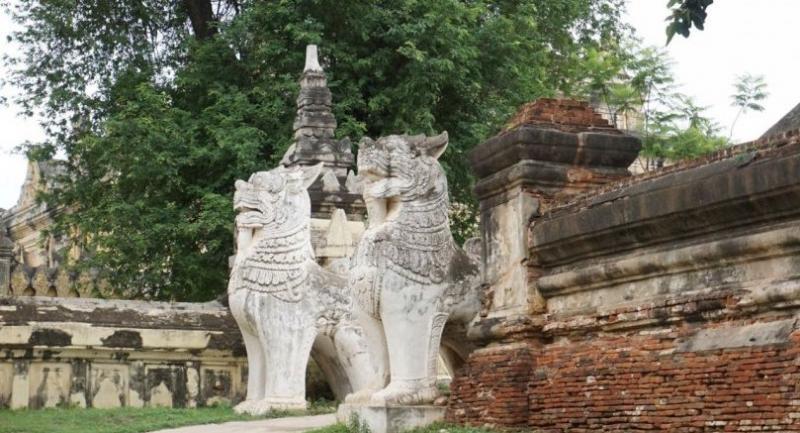Angwa, the land that time forgot

Once the bustling imperial capital of Burmese Kingdoms, the ancient city of Inwa is now in ruins but still a great place to spend a day
Perched on the left bank of the Ayeyarwaddy River in Upper Myanmar, Inwa – or Angwa as it is known in Thai – must surely be the best-known ancient kingdom among Thais. The imperial capital of successive Burmese kingdoms from the 14th to 19th centuries, it was from Inwa that King Hsinbyushin began a two-year assault on Ayutthaya in 1765 that resulted in the collapse of Siam’s capital. Less than 70 years later Angwa was completely destroyed in turn, the victim of several earthquakes. As Maroon 5 put it, “Nothing lasts forever”.

“Visitors jump into horse-drawn carts or make their own way around the old city,” says Khin, my local guide in Inwa.
I opt for the horse and cart and immediately feel worlds apart from the hustle and bustle of Mandalay. Myanmar’s countryside is charming with rice paddy fields and banana plantations stretching as far as the eye can see. The ruins of stupas and abandoned monasteries roll along like a slide show. The driver slows the horses as we arrive in Inwa proper and pulls over in front of a wooden building with huge posts and a multi-tiered roof.
“This is Bagaya Monastery. The entire building is made of teak,” begins Khin, as we head towards the entrance. “It was a Buddhist school during the Inwa period.”
The grand monastery boasts 267 teak posts, the guide continues, the largest of which is almost three metres in circumference. Each post is 20 metres high. Undoubtedly Bagaya Monastery is the pride of Inwa and I find it easy to imagine hundreds of monks and novices praying here. The monastery today is shaky and worn but it’s still beautiful and worth a visit.
The Burmese might have been ruthless as they marched from Inwa to Ayutthaya but they also had a strong artistic side, particularly when it came to woodwork. The entire monastery is decorated with figurines, arabesques and reliefs of birds and animals as well as small pillars all beautifully carved in teak,

Within walking distance from the restaurant are Yadana Hsimi Pagodas. Here, under the canopy of a huge Banyan tree is a beautiful Buddha image surrounded by what remains of a group of small stupas and what remains of a prayer hall.
“The temple was reduced to rubble by the 1839 earthquakes,” says the local guide. “Only some beautiful stone lintels and Buddha images survived around the ruins.”
Back in our personal carriage, the driver guides his horse through peanut and banana plantations. Some farmers are busy clearing weeds, while others balance earthen pots and basketful of grass on their heads.
Finally, we arrive at Maha Aung Mye Bon Zan Monastery. Unlike Bagaya Monastery, where every single piece is made of wood, this huge Buddhist temple is built of stucco-covered brick. The monastery survived the earthquake in 1839 but time has taken its toll on the huge temple. Yet it is attractive in a strange way and in summer, the guide says, its ultra-thick walls provide a welcome respite from the midday sun.

In terms of exotic glamour, Inwa is truly a city lost in the mists of time.
Some visitors don’t take the horse carriage at all, but prefer to travel on foot. With map in hand and plenty of time, they explore the ancient city on foot. Moving at a slower pace, they enjoy a much more accurate experience of where they are: In essence, the middle of nowhere.
IF YOU GO
Bangkok Airways and AirAsia operate flights between Bangkok and Mandalay. Inwa is about 30 kilometres south of Mandalay.
